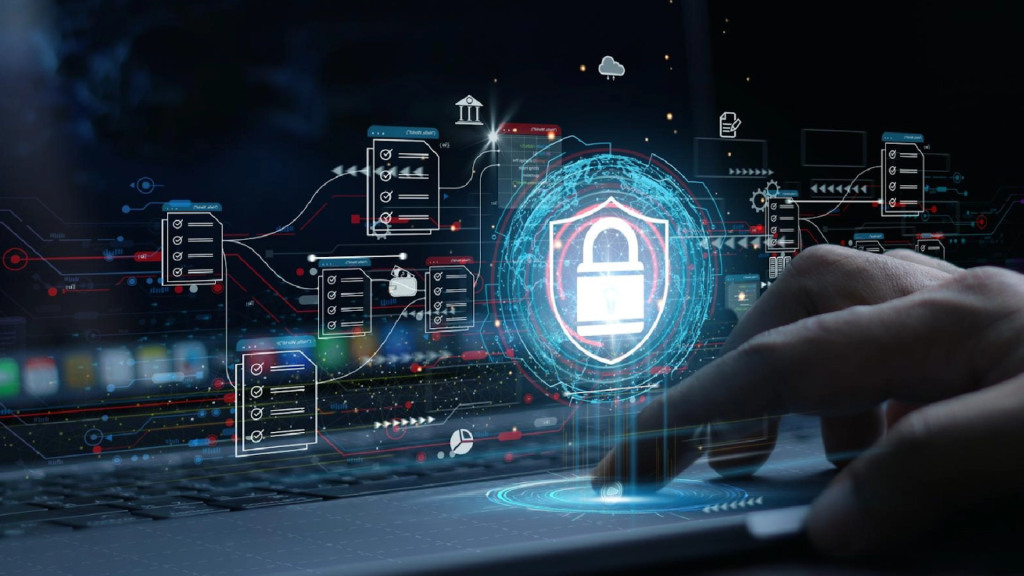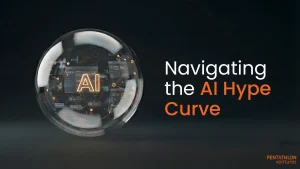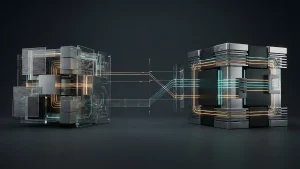A company’s trajectory can change in a single morning. One moment, you’re a celebrated startup, shipping product and scaling fast. The next, you’re in the headlines for a data breach.
This is the new cost of doing business in a world where the average data breach takes nearly nine months to identify and contain. And cybercrime is hurtling toward $10 trillion in annual damages. For years, we treated cybersecurity as a defensive chore, a compliance checkbox that slowed us down.
But that view is dangerously outdated. The companies that will dominate the next decade understand that robust security is no longer a guardrail. It’s the engine for growth, and Artificial Intelligence is the fuel making it all possible.
In India, the Stakes Are Uniquely High
The ground is shifting faster here than almost anywhere else. With 60% of our enterprises on the public cloud and over two billion active IoT connections, India’s digital surface is expanding at a breathtaking pace. But this hyper-growth creates a unique set of challenges that represent a massive opportunity:
- Rapid Adoption, Lagging Tools: Indian firms have adopted global tech at scale, but there’s a major gap in security solutions tailored to local pricing and compliance.
- Fragmented Systems: Many enterprises juggle a complex mix of security tools, creating dangerous blind spots and a clear need for unified platforms.
- Critical Infrastructure at Risk: Securing our nation’s power grids, financial systems, and manufacturing hubs is a national priority now.
- Regulatory Tailwinds: With new laws like the Digital Personal Data Protection (DPDP) Act, robust security is no longer just good practice. It’s the law, turning compliance into a competitive advantage.
The Battlefield Has Moved from the Fortress to the Frontline
We used to think about security in simple terms: a fortress with a strong perimeter. That fortress has crumbled. The cloud, SaaS tools, and a remote workforce have dissolved the perimeter entirely. The new frontline is the laptop in a Bangalore coffee shop, the smartphone closing a deal, and the sensor on a factory floor.
This new reality is where AI makes the difference. Instead of building walls, the goal is to manage risk intelligently across a thousand different points. AI-driven tools for Cloud Security Posture Management (CSPM) and Extended Detection and Response (XDR) can now make instant, autonomous decisions, continuously assessing risk across every endpoint and cloud asset. They are the intelligent immune system for a borderless world.
The Decisive Battles Are Fought Inside Your Applications
The most critical war is now won or lost in the code. Modern software, built from constantly changing microservices, can expose 10 times more attack points than a traditional application. For too long, security has been an afterthought like building a car and then trying to figure out where to install the brakes.
At Pentathlon, we believe the future lies in embedding security into the development process from day one. This is the core of DevSecOps, and it’s being supercharged by two transformative, AI-powered technologies:
- Runtime Application Self-Protection (RASP): Think of it as a self-defense mechanism for your software, allowing an application to neutralize attacks in real-time, from the inside out.
- Application Security Posture Management (ASPM): This is the AI co-pilot for your developers. It provides a continuous, holistic view of your application’s security, helping your team build safer code from the start. The ASPM market is set to more than double, from $10B in 2023 to $25B by 2030, but its true value is cultural: security stops being a gatekeeper and becomes an innovation partner.
Data and Identity: The Core of Modern Security
While applications are a dynamic battleground, the assets attackers are truly after are your data and user identities. This is where security creates undeniable business value.
- Data Protection as an Asset: In a world governed by DPDP, GDPR, and CCPA, protecting data is no longer an overhead cost; it’s a competitive differentiator. AI-enhanced Data Loss Prevention (DLP) tools are crucial for automatically discovering, classifying, and protecting sensitive information across complex multi-cloud environments.
- Identity as the Core Control Layer: Identity remains the most exploited attack vector, with fraud costing India over $40 billion annually. As Zero Trust architectures redefine security, identity becomes the new control plane. The crucial innovation is in developer-first IAM and PAM platforms using AI to power adaptive authentication and behavioral biometrics, continuously verifying every user and enforcing Zero Trust in real time.
A Leadership Opportunity for Indian Founders
Every founder now faces a choice. You can continue to see cybersecurity as a tax on your growth. Or you can recognize it for what it truly is: the bedrock of trust that gives you the freedom to scale.
As investors, we see a clear opening for Indian startups to lead globally. The opportunity is to create intelligent, developer-first platforms that use AI to help companies ship better, safer products, faster.
The founders who make this choice will build the next generation of resilient, world-class companies, powered by security that is not only predictive but invisible, automated, and deeply embedded into the fabric of their business.




